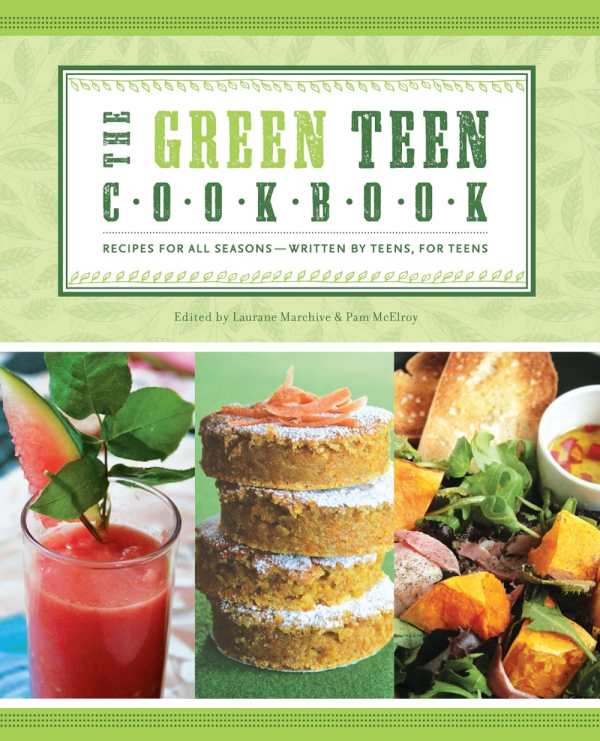The Green Teen Cookbook
Recipes for All Seasons—Written by Teens, for Teens
Concise, conversational instructions direct teens toward their kitchens and prepare them for college and living-away-from-home life.
Eye-catching photos and mouthwatering recipes fill the pages of The Green Teen Cookbook. Editors Laurane Marchive and Pam McElroy educate without talking down as they introduce inventive ideas for the kitchen and discuss global and environmental awareness, as well as healthy lifestyle choices regarding food, its consumption, production, and purchase. The Green Teen Cookbook promises “recipes for all seasons—written by teens, for teens,” and delivers, at least in part.
The Green Teen Cookbook is broken down into seven chapters, including “A Rough Guide to Healthy, Environmentally Conscious Cooking,” “Breakfast and Brunch,” “Soups, Salads, & Sandwiches,” and “Desserts.” The recipes themselves are engaging and range in level of difficulty from quick smoothies and homemade peanut butter to the nuanced flower prawn soup and crème brûlée. An emphasis is placed on green habits, and a fun “seasonal” section appears at the end of each grouping, showcasing a single food like lasagna, salad, or pie, made with different ingredients based on whether the cooking will be done in summer, winter, spring, or fall.
Several short, informative essays are included, covering a variety of current issues. At times, the authentic teenage voice gets lost, and even the recipes, which feature pictures and snippets from their teenage contributors, do not ring completely true. Two teens describe pesto identically: “should be wet, but not runny, like paste. Set aside.” While the instructions are clear and concise, they are not noticeably written by teens. Two recipes use alcohol, white wine, and rum, which a typical teen would be unable to purchase.
The Green Teen Cookbook should accompany older teens in college, first apartments, or any newly independent living situations. Parents will appreciate the emphasis on global awareness and healthy foods—most recipes include a variety of fruits, vegetables, and herbs, all suitable for growing at home. Truly, anyone interested in incorporating fresher ingredients into a more mindful diet without sacrificing taste, creativity, and quality will enjoy The Green Teen Cookbook.
Reviewed by
Pallas Gates McCorquodale
Disclosure: This article is not an endorsement, but a review. The publisher of this book provided free copies of the book to have their book reviewed by a professional reviewer. No fee was paid by the publisher for this review. Foreword Reviews only recommends books that we love. Foreword Magazine, Inc. is disclosing this in accordance with the Federal Trade Commission’s 16 CFR, Part 255.

